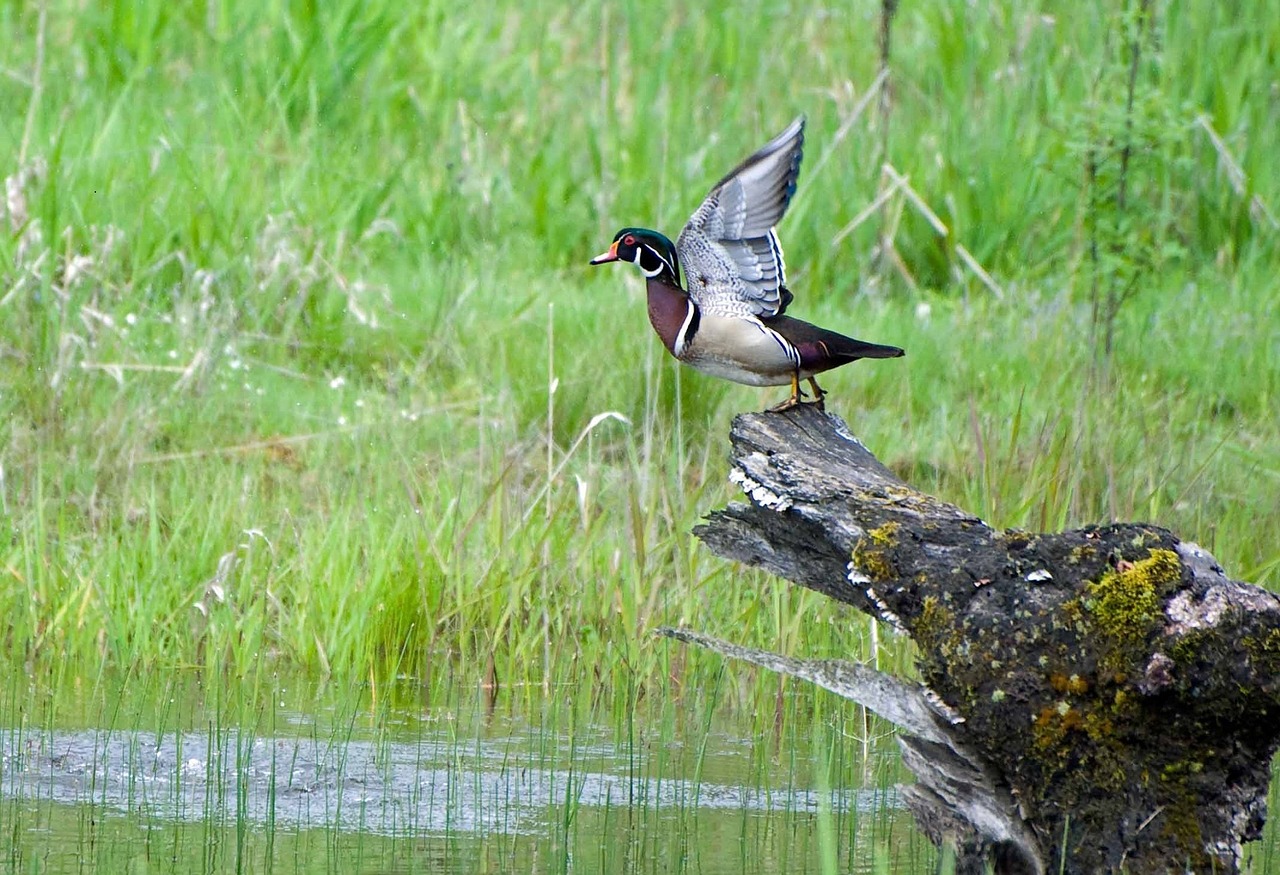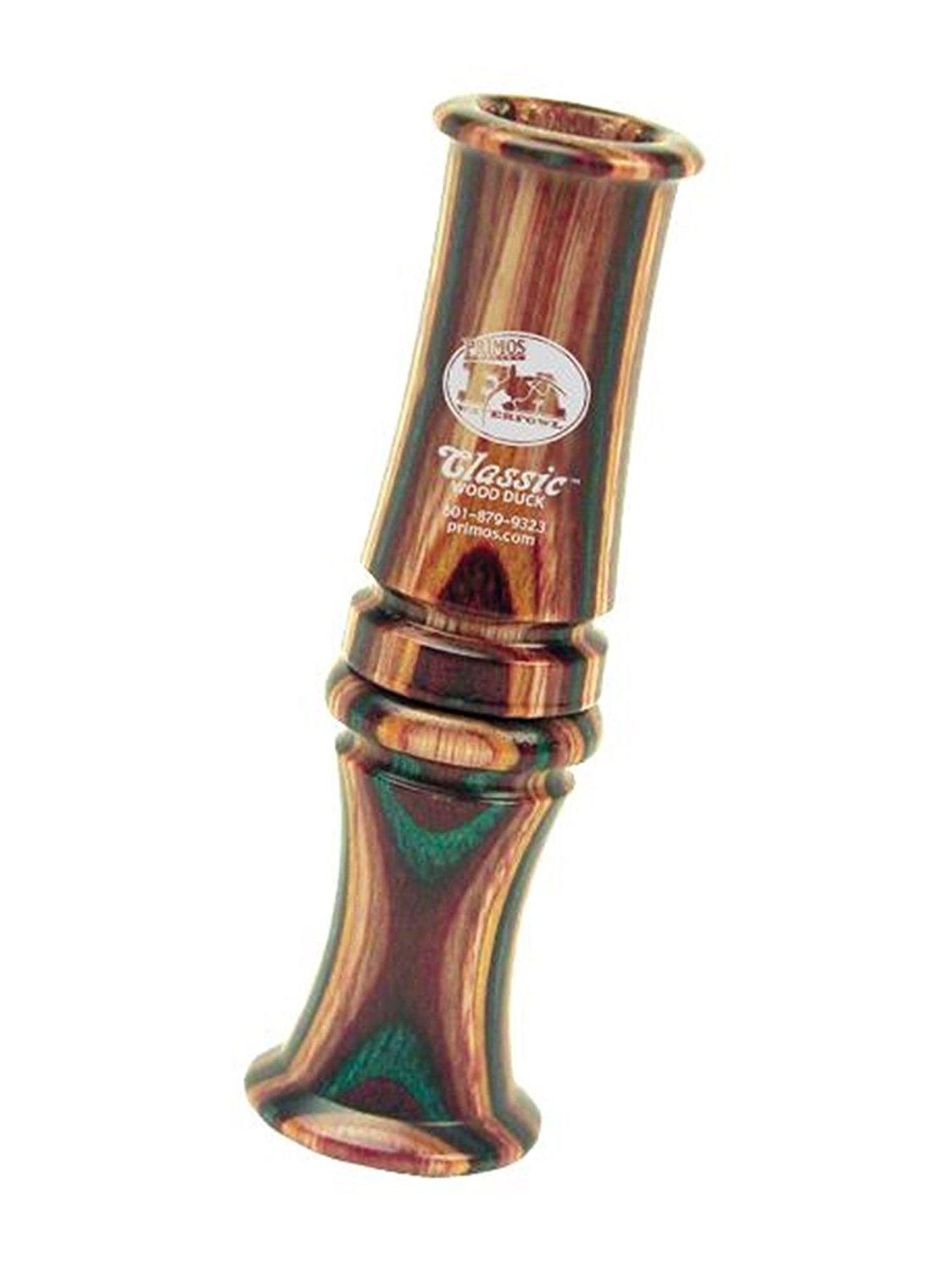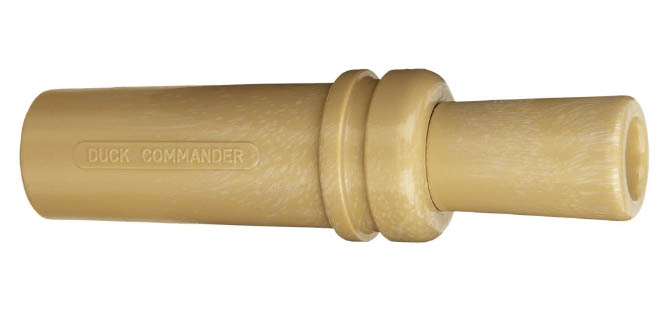
For two days you've spent your mornings watching a flock of wood ducks. You've tracked them to the known roosting site, just inside a dense area of woods off from the main river body, and around a few beaver sloughs. You know they come back here for two reasons. One, wood ducks are predictable, and two, you've seen them fly back in not once but twice. You were even tempted at taking a few shots that second night, but you know that could potentially ruin the roosting spot for the rest of the season, not to mention potentially years to come. So, instead you executed exemplary patience, and found an awesome fly-away where the river turns about two hundred yards down.
You begin to settle in on the third day for some pass shooting and drop some decoys along the fly-away. You tuck into the dense natural bank cover and grab the wood duck call you've recently added to your lanyard. Your goal is to trick the incoming wood ducks into coming down while they are heading to their final destination for the day. That, and of course reaching your bag limit. However, regardless of all the things you do right, there is one thing nobody told you. Just because the "wood duck whine" is the most popular call sound for wood ducks, and is recommended by many, it actually is not the best sound to produce on a consistent basis.
This is because that particular sound is typically used by wood ducks to communicate danger, which is why it's heard so often while they are flying. They are always flying away from danger, regardless if the threat is real or not. This is not commonly known because that noise can still call them in, depending on time, location, and effective use of the call itself. This is exactly why if your going to get a wood duck call you want to get the best one available.
Wood Duck Calls | Summary |
|---|---|
Hardwood, authentic drake wood duck sounds | |
Plastic, simple, effective single reed | |
Perfect backup for all avid waterfowl hunters | |
Great plastic package deal for the money |
The best wood duck calls mimic the higher pitched squealing, or whine type of noise, that wood ducks make most often. They are typically part of the call group called "cut down calls", which are great for denser wooded areas along with over frozen water, but can be used in an array of situations. The best wood duck calls will also be versatile, so you can achieve various pitches and great volume while being able to change up some techniques to achieve other wood duck sounds. Wood duck calls are also going to be fairly simple in comparison to some others because they aren't necessarily the number one tool a waterfowler has for bagging some woody's.
There are many different types of duck calls just as there are different types of wood duck calls. It comes down to the material it's made of, whether it has a single reed or double reed, and even who makes it. Just because the price may be high, doesn't mean the call is great. In fact many avid duck hunters agree that because the popularization of the duck commander brand, there has been an influx of calls flooding the market. It can be hard to discern the best from the rest.
Before we get into the best wood duck calls, let's take a look at some different types of calls, some common mistakes, and some tips to avoid them.
Common Wood Duck Calling Mistakes & How to Avoid Them
One of the most common mistakes is the overuse of the "wood duck whine" sound. Again this is typically used to issue warnings of danger to one another and although it will call them in or make them active in some cases, if used improperly or too often, it will surely keep them away.
Another is the placement of decoys. Strategically placed decoys can bring them in just like mallards, but they have to be in the right area. This is NOT right next too, or in, the roosting area.
One more fairly common mistake, is hunting woody's in one location. Simply waiting for their return home at dawn sounds like a great idea, and it can be a great idea, just not too repetitively. It will only be consistently productive when the scenario is perfectly laid out. This isn't a bad option by any means, but it requires patience, great calling techniques, great decoy placement, and a bit of luck that the wood ducks won't overlook you for one last feeding spot. That, and you have to hope they don't become spooked, only to stay high and then glide into the trees to roost for the night. A better alternative may be jump shooting.
Jump Shooting
Jump shooting is a technique of hunting waterfowl where the hunter is constantly mobile. One of the best ways to do this is on foot, following a creek or small river and focussing on the backwater wetlands. Key areas to hunt are around beaver sloughs, river oxbows, or slack water pools. As you move, you should kick up a few wood ducks from the trees. The other way to jump shoot is drifting down a stream or small river in a canoe or small river boat, and catching the birds as they fly in and out of the woods.
Another nice thing about jump shooting is that it does not require much gear. In fact all you really need is a shotgun, some camo, and shells. Of course some other items make it better, such as binoculars, waterproof boots/waders, and a good wood duck call doesn't hurt either. That, and jump shooting is great to do with a partner/friend. You can strategically push woody's out from roosting, or take turns paddling and shooting from the boat.
Some More Tips
A couple more wood duck hunting tips would be to not overuse the same whining sound. Work on changing pitches, volumes, and possibly different noises all together that will still result in bagging your limit of wood ducks. Also, when it comes to placing decoys they need to be just close enough to the known roosting site to trick flyers into landing early, but not too close that they will skip it or too far that they will overlook it.
Place your decoys in recognized fly away zones, and align them directionally with the roosting site; however, even in more open water I wouldn't throw out more than ten or so in a spread. If your hunting small creeks or beaver sloughs then using more than a few will look unnatural to the ducks because they don't typically sit together in the woods like that. I don't recommend decoys when jump shooting around sloughs or other various wetlands.
Okay, let's look at some types duck calls.
Types of Wood Duck Calls
First, they come in an array of material while the most popular are synthetic plastics and wood. Synthetics will be made up of mixed levels of different polymers, acrylics, and so forth. Classic duck hunters will tell you the best will always be custom wood duck calls made from a good wood like walnut, which is probably the best wood for making duck calls. Although wood looks great, feels great, and typically produces great sounds, they change shape over time as they shrink and expand with the weather causing it to eventually produce bad sounds. With today's technology it's easily argued that synthetic calls are even better than their wood counterpart.
Typically the denser the material the call is made from the crisper the sound will be, and the louder it will be. Acrylic calls are going to give a sharper sound, but of course every different manufacturer is going to pick and play with the exact noise in order to achieve uniqueness.
Duck calls also come in single reed and double reed. Single reed calls are the top choice for most professionals because they are usually louder, although they can be toned down, and once you master them you can make it sound like more than one duck. Double reeds are more for beginners and are designed to either be loud or soft. A major issue with double reeds are once the reeds become moist they tend to stick together in colder weather.
There are three main call variations designed for specific uses.
Cut Down Calls
These are ideal wood duck calls that produce a very loud sound with more pitch variations. These calls are ever increasingly popular and came about from hunters trimming the reed on older calls to produce a louder sound.
Open Water Calls
These calls are designed to be great in the wind and over large open areas. They are loud and it takes a lot of practice if you want to produce a softer sound with them.
Timber Calls
These produce a much softer sound and are great to use in close quarters. They are particularly successful with highly pressured birds or to to use as a last convincing call when trying to lure them in.
Wood Duck Call Recommendations
Now that you know a bit more of what your looking for, here are the top 4 wood duck calls.
Primos Classic

This is a fantastic wood duck call that is made from laminated hardwoods, and produces very rich and authentic sounds of the drake wood duck. It can be used for wood ducks in the trees or in the air, and can honestly be used with other calls for different ducks. It also looks great on any lanyard. This is the best wood duck call for beginners and experienced hunters alike.
Duck Commander Wood Duck Call
The duck commander wood duck call is a simple, effective, and well built single reed call. This is made from a very durable plastic compound that produces wood duck sounds of flying or sitting. Not to mention its highly reviewed and recommended by more than just the duck dynasty people.
KillerKallz Mini
This is a great little duck call that is perfect for kids, beginners, or even experts; although it's typically a backup for avid waterfowlers. It is American produced and hand made to ensure quality performance and a long life. It makes a great addition to any lanyard or a great start to a new one.
Haydels WP05 Wood Duck Squeal & Whine
This is probably the best deal for the money because it's a package deal. You get one standard wood duck call and a wood duck squealer. With these two weapons you won't need another call when hunting wood ducks. Combined they produce the necessary variety of sounds needed to bag wood ducks. They are made from high grade plastic compounds and built to be durable and long lasting.
We hope you've enjoyed this article, and it helps you choose the best wood duck calls to add onto your lanyard. As always, thanks for reading!






